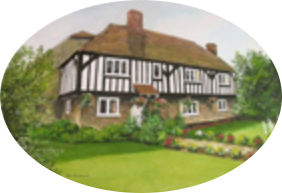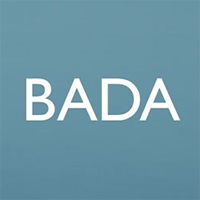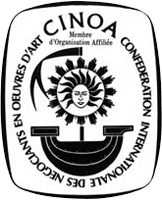Rare Victorian 16 carat Gold Novelty 'Whitehead' Torpedo Propelling Pencil with Noble Russian Provenance
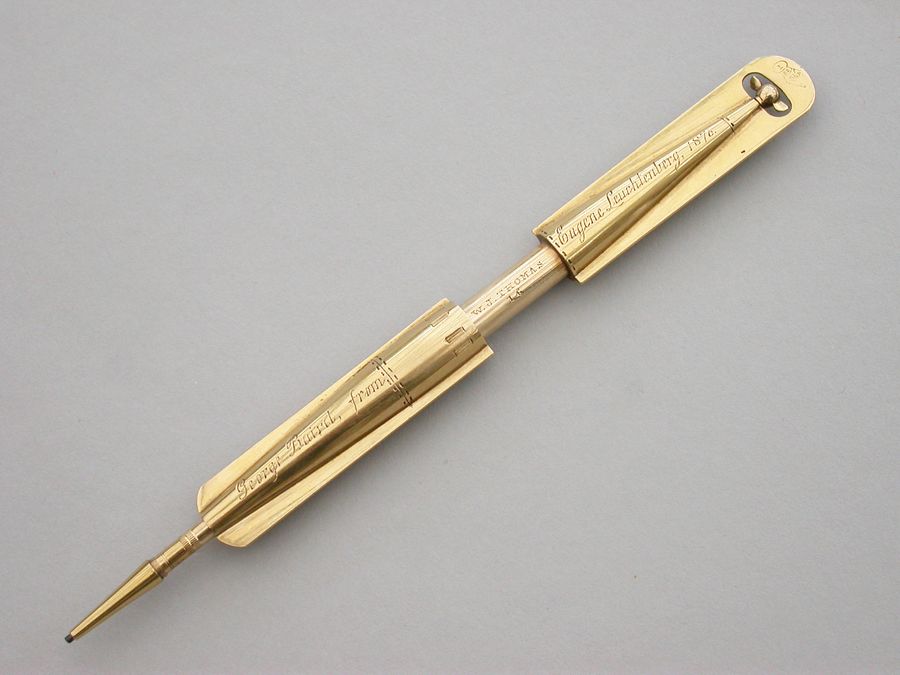


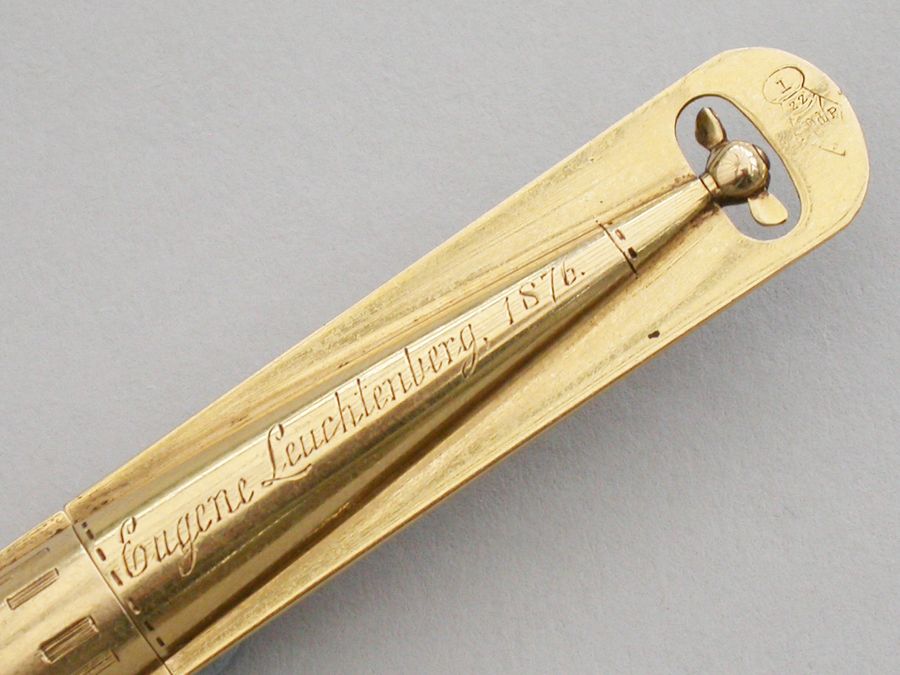
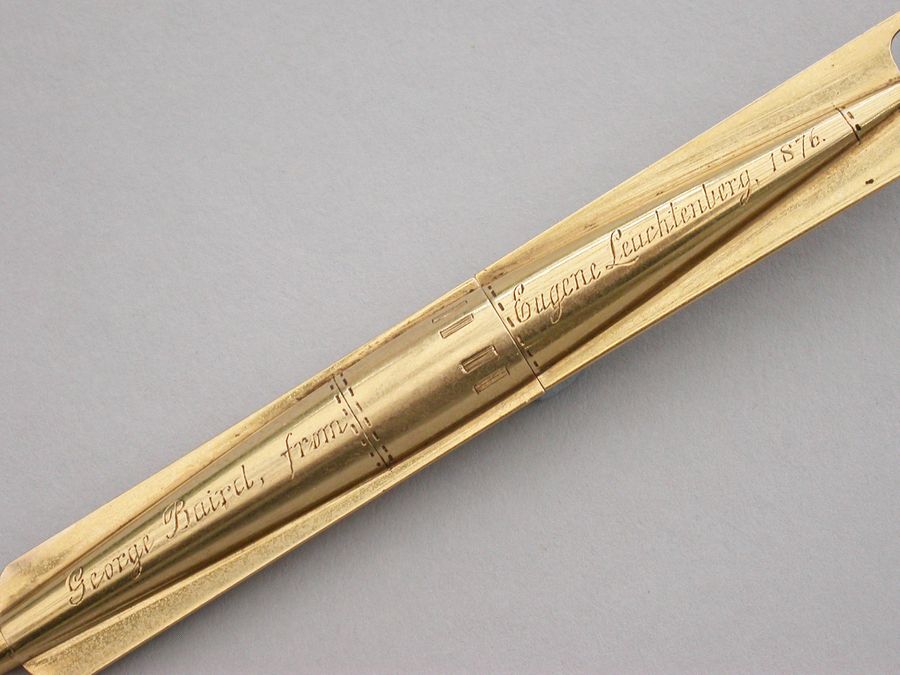
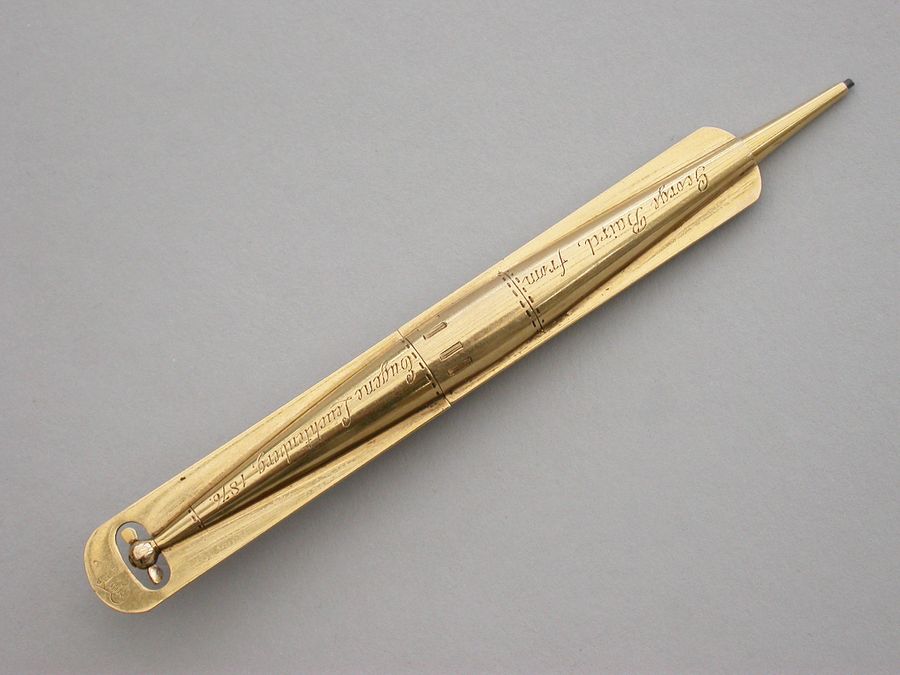
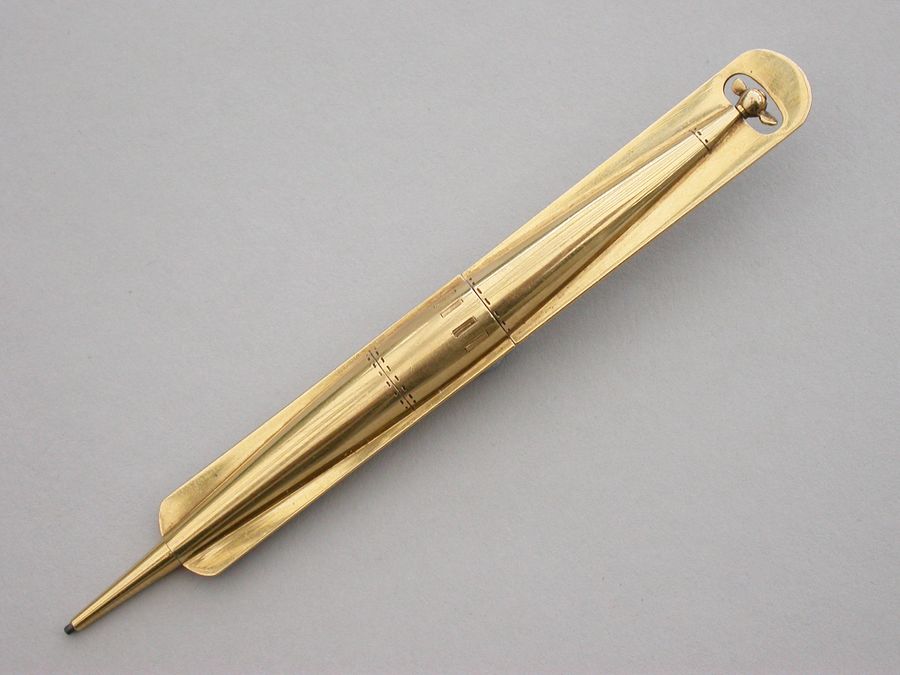

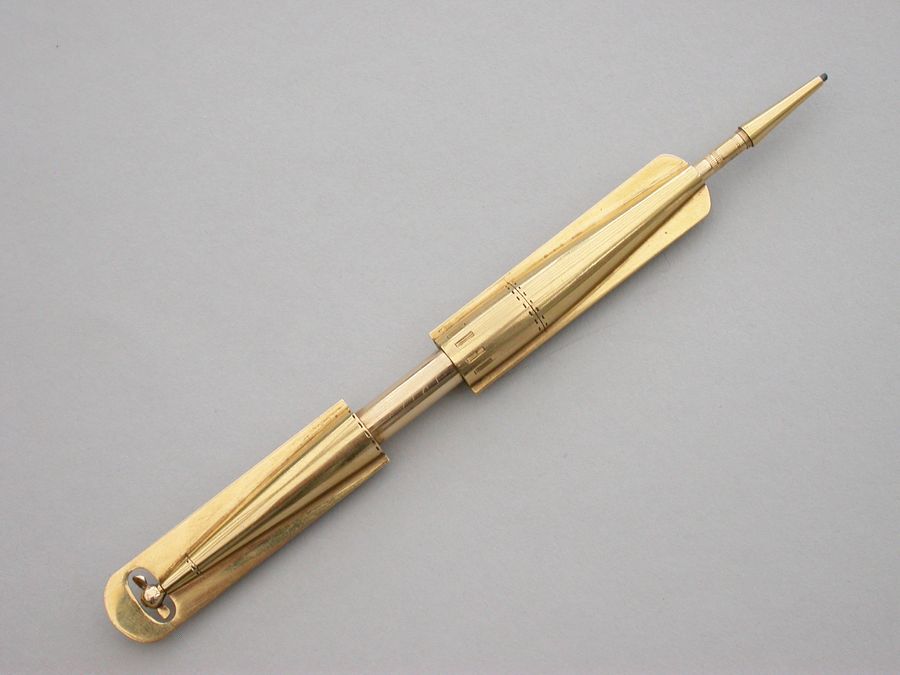
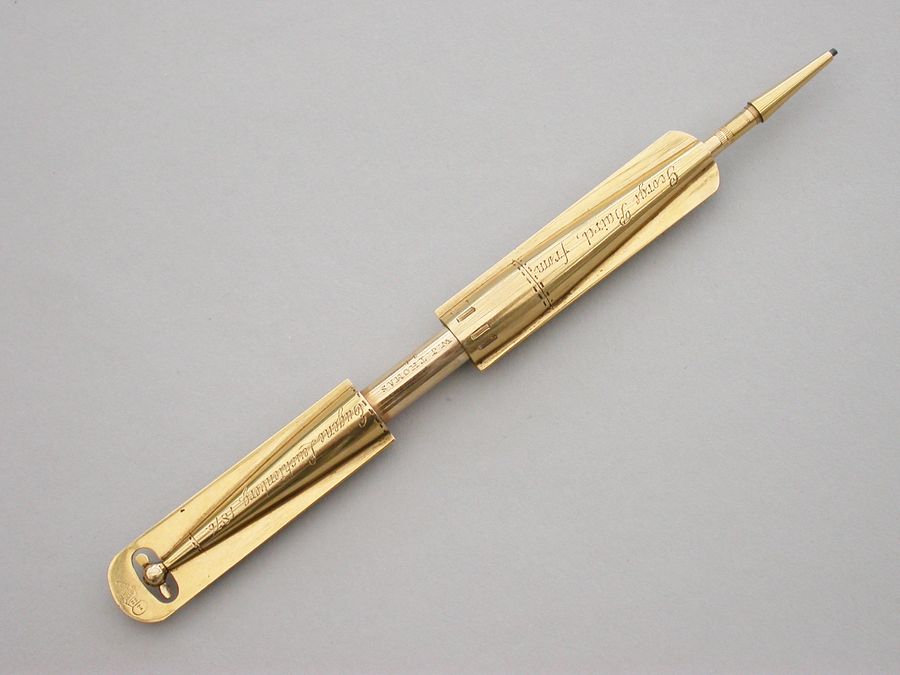
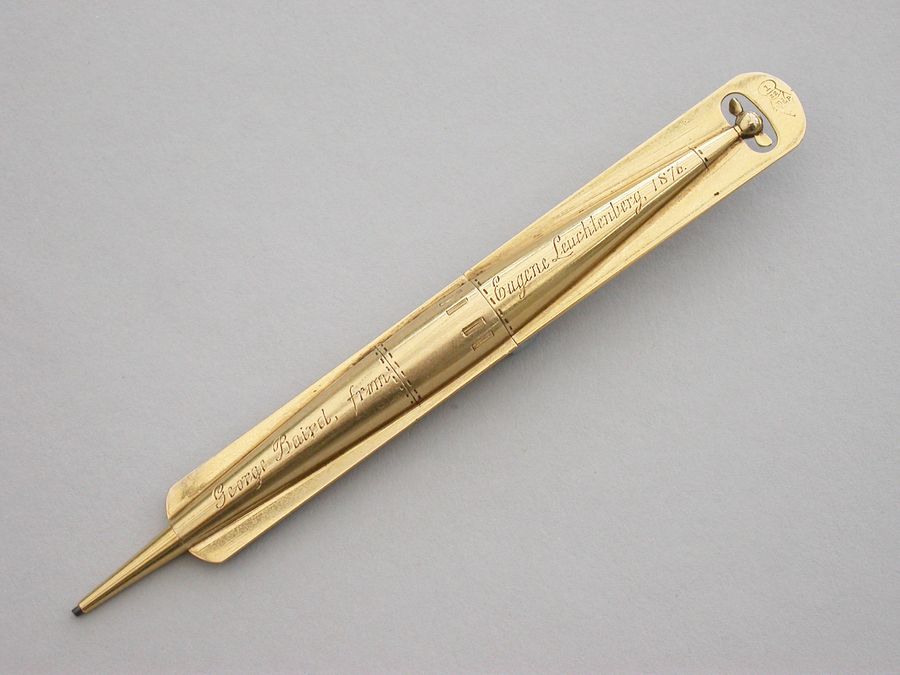
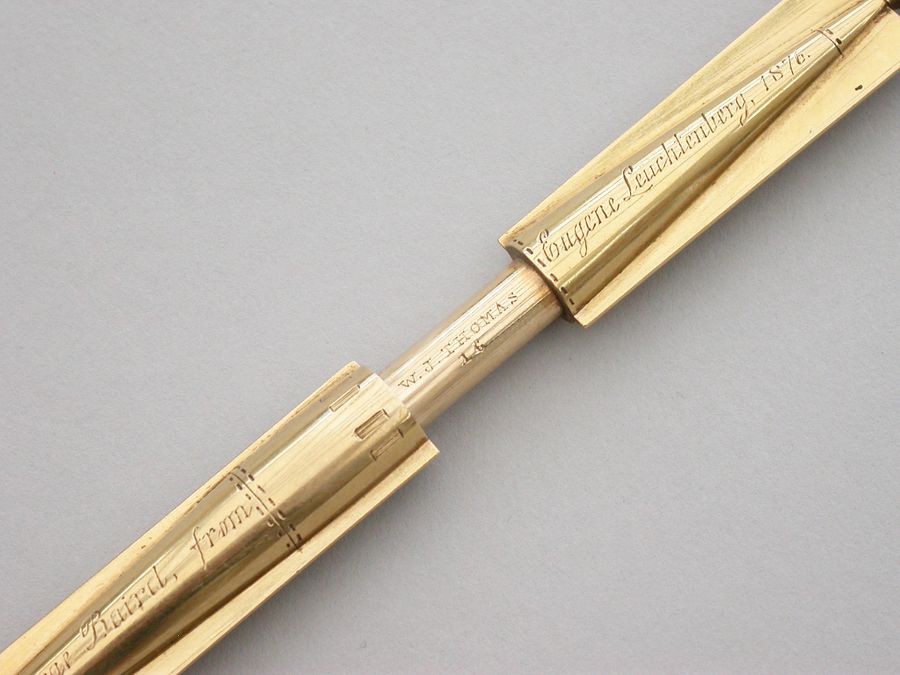
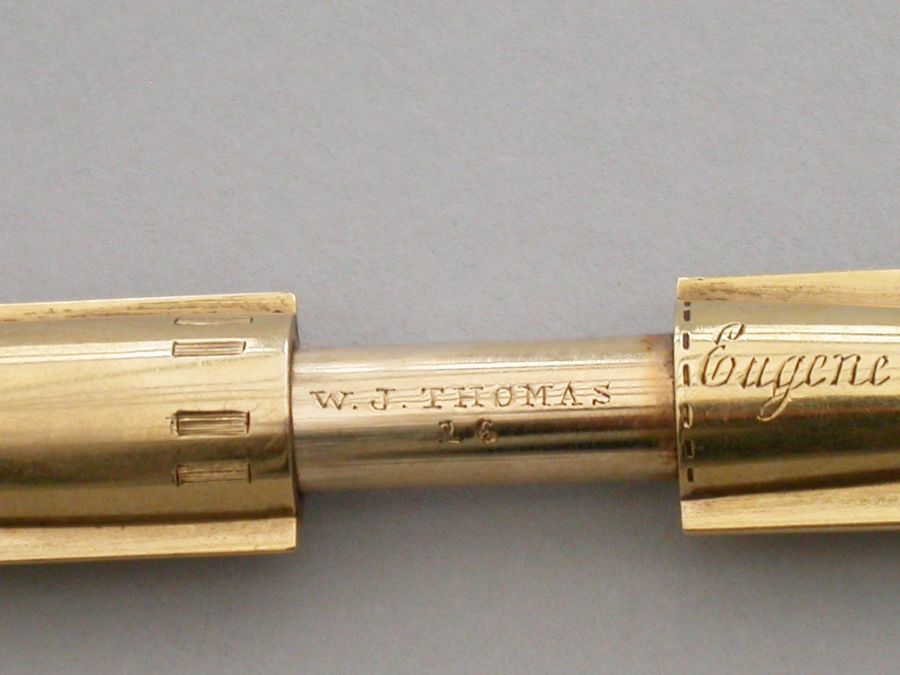

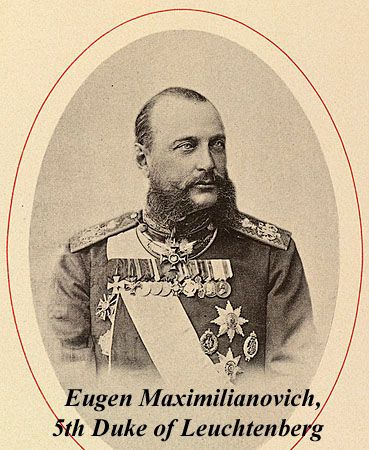
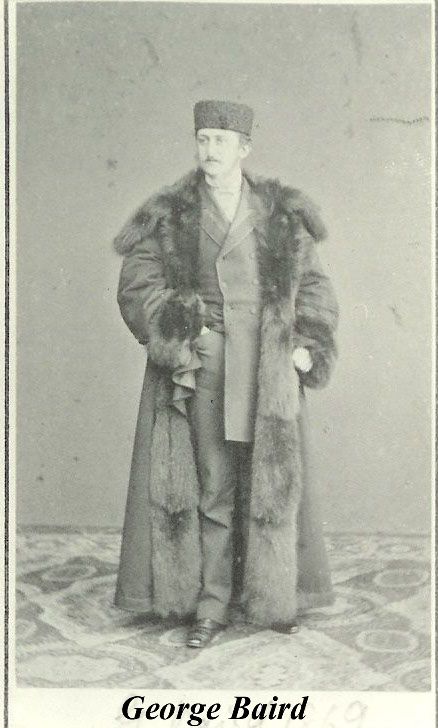
An extremely rare Victorian novelty 16 carat gold Propelling Pencil made in the form of a "Whitehead Torpedo", with realistic detail and spinning propeller. Engraved - "George Baird from Eugen Leuchtenberg 1876,".
The barrel engraved with the retailer's mark of W J Thomas, but almost certainly made by Sampson Mordan & Co who registered the design.
Also stamped with the diamond registration mark for the 22nd June 1877.
By Sampson Mordan, London, c1876.
122mm open
98mm closed
The Whitehead torpedo was developed by Robert Whitehead, working with the engineer Giovanni Luppis, a retired engineer from the Austrian Navy in Trieste. Luppis had produced the first prototypes of a self-propelled torpedo, which he called the "coast saver," which took the form of a low-profile floating device, propelled by compressed air, and controlled by ropes from the land. Whitehead had separately developed a device which had a speed of 7 knots (13 km/h) and it could hit a target 700 yards (640 m) away. It used compressed air to turn its propeller, was stable in azimuth, but was unsatisfactory in not being able to control its depth. Their combined knowledge created the first effective self propelled torpedo impressive enough, in demonstrations, to be bought by the Austrian Navy in 1869. Later that year Whitehead demonstrated his torpedo to the British Admiralty and, in February 1871, sold a licence to Great Britain, which started producttion in their newly erected torpedo factory in Woolwich. France bought a licence in 1872, Italy and Germany in 1873, Norway, Denmark and Sweden in 1875, Turkey and Russia in 1876.
The latter date has a tantalising connection to the presentation engraving on the pencil, it is possible that the negotiations for the licence were undertaken by His Imperial Highness Eugene Maximilianovich de Beauharnais, 5th Duke of Leuchtenberg, (1847-1901) son of Maximilian de Beauharnais and Grand Duchess Maria Nikolaevna of Russia and George Baird of the Baird iron and armaments dynasty.
The Baird family involvement in production of steel and arms in St Petersburg started in 1792 with Charles Baird (1766-1853) when he merged his business with Francis Morgan. The Baird Works or Iron Foundry quickly became famous for its order and efficiency, so much so that the Baird name became part of a phrase in Russian; 'as at the Baird Works,' roughly translating as 'everything is in apple-pie order'.
St. Petersburg is full of Baird creations: the dome on St. Isaac's Cathedral – considered a feat of the time was created by the Baird Works; the statues around the dome, the heating system of the cathedral, the pediments containing bas-reliefs above the columns on each side of the cathedral's exterior, as well as the bases and capitals in bronze of the columns both inside and outside.
In 1819, Charles' son Francis joined him at the Baird foundry and by 1832, together they owned more steam-engines than anyone else in Russia and had the largest sugar refinery ever built in the country, as well as many steam-boats. Both Charles' and Francis' work in the mechanical field was recognised and admired. Tsar Alexander I, accepted Charles as a Russian subject in 1811 and presented him with various decorations. In 1834, Nicholas I gave him the Order of St. Vladimir 3rd class, for making the angel at the top and the bas-reliefs at the base of the Alexander column outside the Winter Palace. An example of the production of the works can be seen today in the Kremlin; the 1835 gun carriage for the 1586 Tsar Pushka cannon.
Francis was similarly decorated; Alexander II gave him the Order of St. Stanislav, 2nd class for producing machines and other equipment for the St. Petersburg arsenal, and again in 1858 for providing propellers for steamships.
Francis' son George was born in 1842 and he took over the business in 1864. In 1871 he petitioned Alexander II to be confirmed as a hereditary nobleman. He departed Russia in 1881 and sold the Works to The Franco-Russian Society a year later. His position in Russian society, his English connections and his experience in the arms trade could well have set him up to undertake delicate arms negotiations with Whitehead.
Sold - £2,950.00
